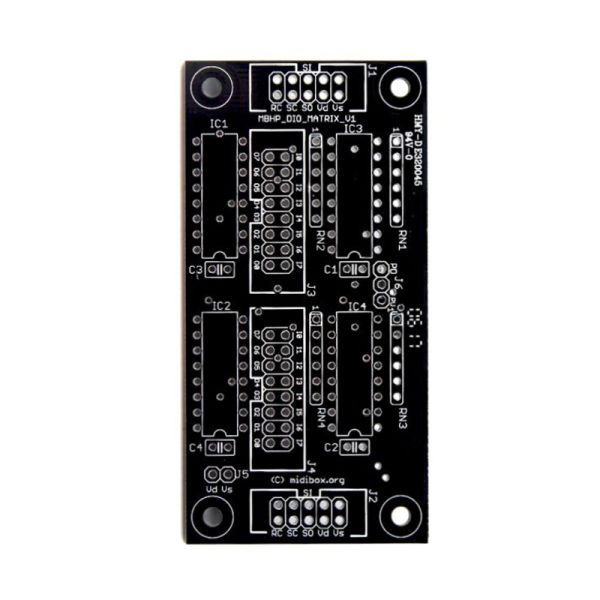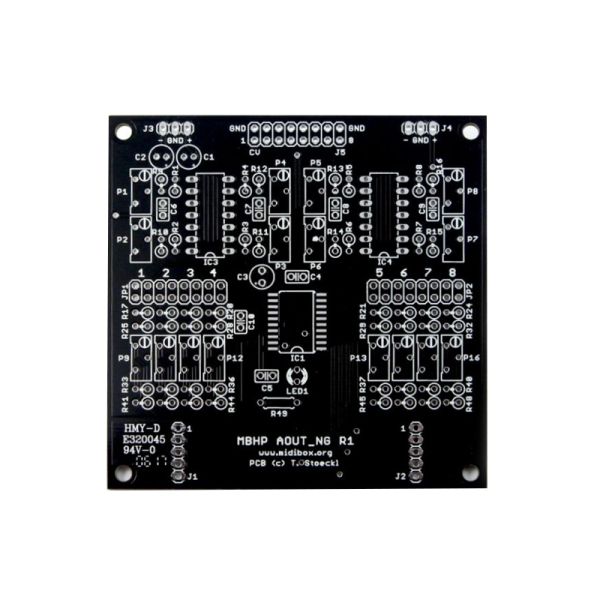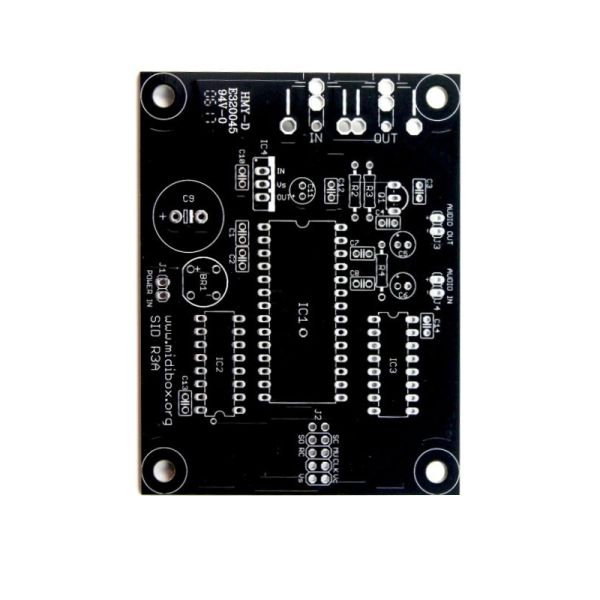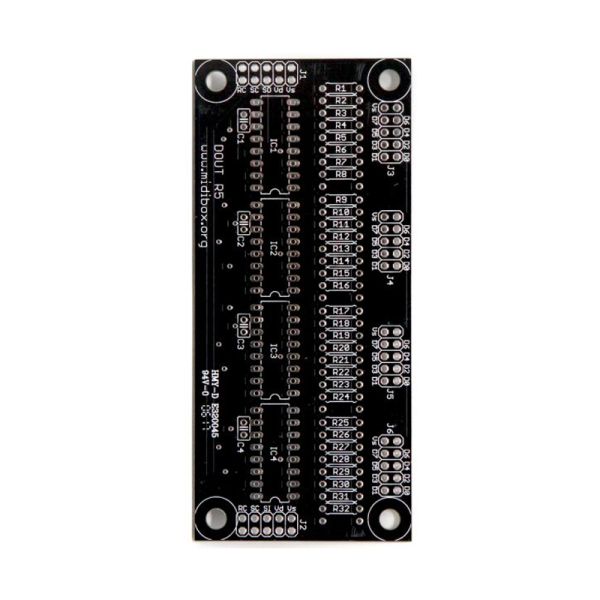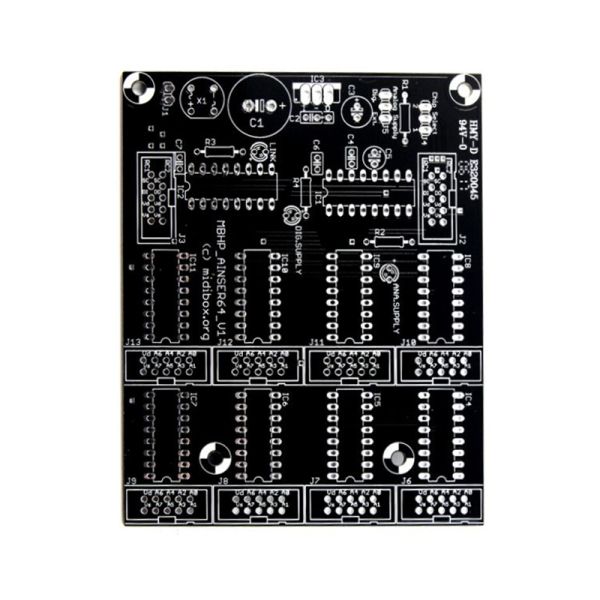OPL3 Module PCB | MIDIbox
- Home
- Manufacturer
- OPL3 Module PCB | MIDIbox
OPL3 Module PCB | MIDIbox
$10.00
The MBHP_OPL3 module allows FM Synthesis to be incorperated into your MidiBox Synth projects, Typicaly It's used in the MIDIbox FM project.
This is for a PCB ONLY in a standalone/MIDIbox format.
Availability:In stock
BrandMIDIbox/ ucApps.de

MIDIbox Hardware Platform, OPL3 Module
This page describes the technical details of the MBHP_OPL3 module, which is used in the MIDIbox FM project.
FM synthesis became very popular in the 80s after Yamaha released the GS1, and two years later the DX7, which was some kind of revolution these days since most synthesizers were normaly based on analogue parts and limited to the possibilities of additive/subtractive synthesis. FM synthesis is very hard to realize with analog componets, because it requires a stable relation between the modulator(s) and carrier oscillators for audible (or lets say musical) results. Yamaha developed (and patented) a digital solution which was the basis for various chipsets. Fortunately Yamaha did not only build these chips exclusively into their own synthesizers, they also started a product line of OEM chips dedicated for video games and home computers - for example YM2149 (used in the Atari ST, MSX, Intellivision and ZX Spectrum), YM3812 (used in AdLib and early Sound Blaster sound cards) and finally the YMF262 (used in Sound Blaster Pro 2.0 and later cards until the OPL3 was ousted by wavetable synth chips in the late 90s) - computer ventors preferred these FM chips since they were cheap and covered a wide range of instruments.
More in-depth informations about FM and the OPL3 can be found here:
- A Beginner's Guide to FM Synthesis
- Sound-On-Sound article about FM synthesis
- A nice abstract about the history of Yamaha FM synthesis
- Vortexions page on sound chips
- Programmer's Guide to Yamaha YMF 262/OPL3 FM Music Synthesizer
- YMF262 datasheet
- YAC512 datasheet
Technical Details
-
The YMF262 sound chip was mostly sold in a 24-pin SOP package which is (unfortunately) hard to handle for soldering novices. It provides an 8bit parallel interface to the registers, requires a stable clock source of 14.318 MHz and one or two separate DACs (YAC512). The parallel interface is directly connected to the "LCD" port of the MBHP_CORE module, most pins are shared with the LCD in order to reduce the IO pin count. The DAC outputs are directly connected to the YAC512. Sound cards are mostly stuffed with only one YMF/YAC pair (I've never seen a card with two YAC512) which results to 2 audio channels. With an additional YAC512 four separate channels are available, which is especially useful if the outputs should be routed through different external effects.
Each YAC512 requires an quad-OP amp for reference voltages and the sample&hold stage. The outputs of the S&H stages are buffered again by a third OP amp, which acts as a low-pass filter, before the signal goes to the audio jacks.
Note that the OP amps are powered from a balanced voltage source (+/- 12V). I specified this large voltage range since it allows to take the same PSU like for the MBHP_AOUT module. The TL074s can be alternatively powered from +/-5V to +/-18V.
Availability
-
It isn't so easy to find a distributor who still has the YMF262/YAC512 in stock and sells them in low-quantities (-> try this site). However, the MIDIbox community has already organized a bulk order (see this Forum posting), and future orders are feasible if enough people are interested.
Another way to get the treasured chips is to canibalize them from old soundcards. Thats how I got the chips for the prototype - I purchased some old soundcards from Ebay for ca. 1 EUR each (people don't know what they miss ;-)) and desoldered the SMD chips like described below. Unfortunately the sellers normaly don't specifiy if an OPL3 chipset is on board or not, but sometimes this information is available somewhere in the web. Here a list of some cards which are known as applicable:
- Creative Soundblaster Pro II (or Soundblaster Pro 2)
- Creative Soundblaster 16 (not the VALUE version!)
- Creative Soundblaster Pro SCSI
- Creative Soundblaster 16 SCSI (CT1770)
- Creative Vibra 16 (CT2260)
- Creative Vibra 16 (CT2800)
- Creative Vibra 16 (CT2810)
- Creative Vibra 16 PnP (CT2890)
- Creative SB16 MCD (CT1750)
- Media Vision Pro AudioSpectrum 16
- Media Vision Jazz 16
- Media Vision PAS16 LMSI 1992 (IXW-PAS16P)
- Media Vision PROAUDIO 3D
- Turtle Beach Tropez Rev 2.0
- Turtle Beach Monte Carlo (P/N 500.2)
- ESS AudioDrive
- Aztech Sound Galaxy
- Aztech Sound Galaxy Washington 16
- Aztech Sound Galaxy Nova 16
- Aztech AZT2316-S
- Mozart ISA
- Mediamagic ISP-16
- TeleVideo teleWave Q32=/SRS (Rev.C)
- Televideo Telesound Pro16
- Adlib Gold 1000
- Windows SOUNDSYSTEM (rev B.)
- OPTi 930 Soundsystem (S0930S0010)
Soundcards which are known that they are not stuffed with an OPL3 chipset:
- Creative Soundblaster 1.0, 1.5, 2.0, Pro
- Creative Soundblaster 16 VALUE (PNP)
- all new soundcards which are produced today
- all PCI soundcards (search for ISA cards)
| Brand | MIDIbox/ ucApps.de |
|---|---|
| Additional Resources | BOM Additional ReadingM |
Related Products
DIO Matrix PCB | MIDIbox
$10.00
AOUT_NG PCB | MIDIbox
$12.00
Quad-IIc-MIDI PCB | MIDIbox
$12.00
SID Module PCB | MIDIbox
$10.00
AINSER64 PCB | MIDIbox
$12.00
MIDI I/O PCB | MIDIbox
$10.00

